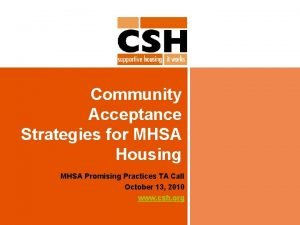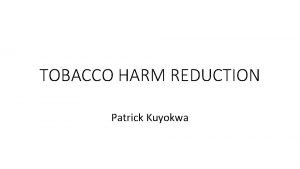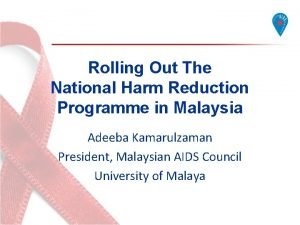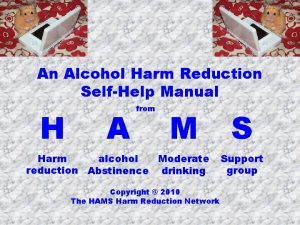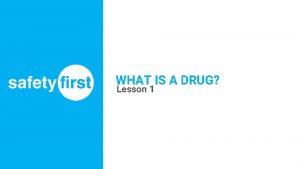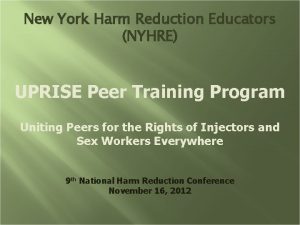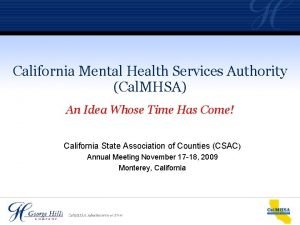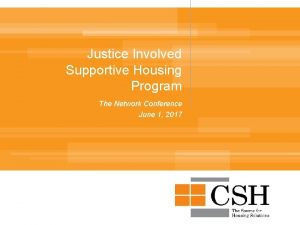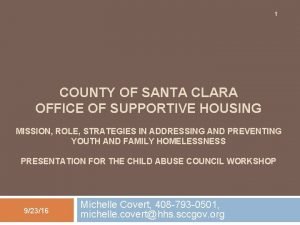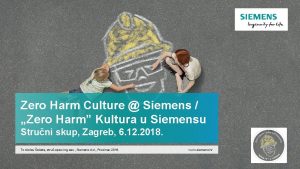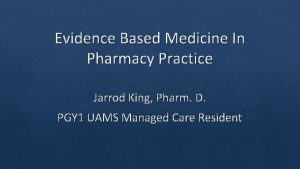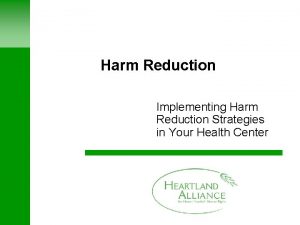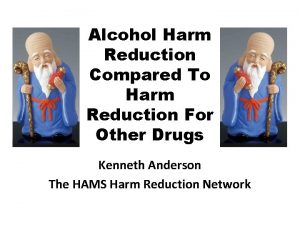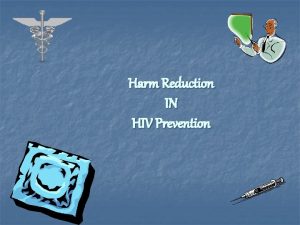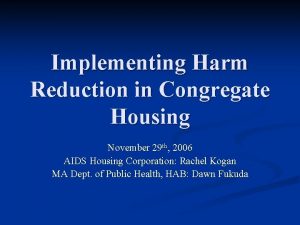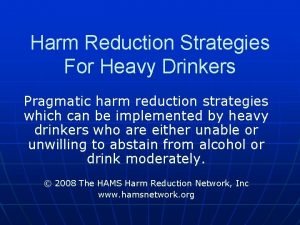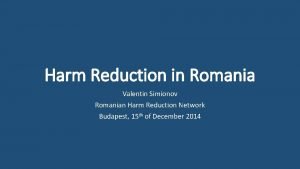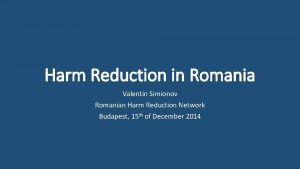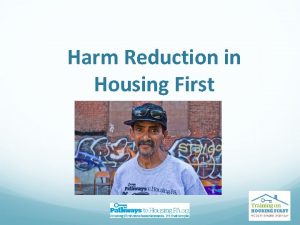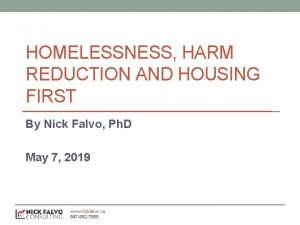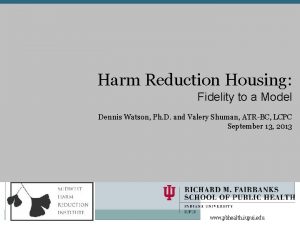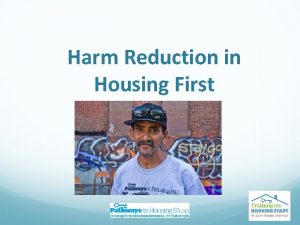Implementing Harm Reduction in MHSA Supportive Housing MHSA















- Slides: 15

Implementing Harm Reduction in MHSA Supportive Housing MHSA Promising Practices TA Call January 12, 2011

Harm Reduction n n 2 One element of Housing First has passed the rigorous evaluation required for inclusion in the National Registry of Evidence-based Programs and Practices (NREPP), a service of the Substance Abuse and Mental Health Services Administration (SAMHSA).

What is Housing First? n 3 Housing First - The direct, or nearly direct, placement of targeted homeless people into permanent housing. While supportive services are to be offered and made readily available, the program does not require participation in these services to remain in the housing. - The use of assertive outreach to engage and offer housing to homeless people with mental illness who are reluctant to enter shelters or engage in services.

What is Housing First? (continued) - Once in housing, a low demand approach accommodates client’s alcohol and substance use, so that relapse will not result in the client losing housing. - The continued effort to provide case management and to hold housing for clients, even if they leave their program housing for short periods.

Principles of Housing First § § § 5 Housing is a choice, not a placement Housing is a person’s home, not a residential treatment program People have a right to safe, affordable housing

Housing First § 6 A Housing First approach rests on two central premises: – The best way to end homelessness is to help people move into permanent housing as quickly as possible – Once in housing, formerly homeless people may require some level of services to help them stabilize, link to long-term supports, and prevent a recurrence.

Defining “Housing First” Philosophies § Safe, affordable housing as a right and a prerequisite for effective services. § Provide permanent housing opportunity as soon as possible. § Do not focus on “housing readiness” or sobriety as a prerequisite. § Facilitate easy access to housing § Housing stability is primary objective § Incremental change is normal. § Quality of life and well-being measure success. 7

Key Principles to Keep in Mind § The goal of all of us is to help people succeed in housing (even if they are using substances) § The quality of life of users can be improved and enhanced while they still use drugs or alcohol. § People can have substance abuse problems and still function and meet life obligations. § Tenants have both rights and responsibilities under their leases, and the lease will guide our response to their issues and behaviors § In helping people reduce the harm caused by their substance use, self-awareness is increased, and other benefits follow. 8

Abstinence and Substance Use § Abstinence can be great if it works § How are we going to serve those who are very committed to their drug use? § How are we going to serve those who keep experiencing relapse? § How are we going to serve those for whom abstinence hasn’t worked? 9

Harm Reduction: Definition n 10 Harm reduction is a set of practical clinical strategies that reduce negative consequences of drug use or other activities, incorporating a spectrum of strategies from safer use, to managed use, to abstinence.

Harm Reduction Principles § § § § 11 People have the right to make decisions about their lives and actions. Harm Reduction is about educating them to make the best decisions for themselves. The user takes responsibility for his/her choices and behavior. The individual sets his/her own goals in collaboration with the service provider. There are no punitive sanctions for what someone chooses to put/not put in his/her body. When we create punitive sanctions, people will lie. Incremental change is normal. Quality of life and well-being measure success.

Some Examples of Harm Reduction § § § 12 Methadone maintenance Following prescription protocols Support groups Education on drugs and drug interactions Permanent housing with voluntary services

Harm Reduction approach to delivering services in housing n n 13 Tenant engagement Client-focused services Motivational interviewing Stages of change

Use vs. Symptoms vs. Behavior As housing providers, where do we focus? Substance Use Mental Illness 14 Symptoms Behaviors

Symptoms, Behaviors, Housing Issues § Illegal Activity leads to Lease Violations § House Rules Violations lead to Complaints and Nuisance Issues § Poor Money Management leads to Rent Non-Payment § Poor Hygiene or Hoarding lead to Failed Inspections § Property Damage leads to Failed Inspections § Unauthorized Subtenants lead to Lease Violations § HOUSING FIRST IS NOT “ANYTHING GOES” 15
 Mhsa housing
Mhsa housing Harm reduction
Harm reduction Harm reduction programme
Harm reduction programme Harm reduction worksheets
Harm reduction worksheets Hams alcohol
Hams alcohol Harm reduction strategies
Harm reduction strategies Nyhre
Nyhre California mental health services authority
California mental health services authority Justice involved supportive housing
Justice involved supportive housing Santa clara county office of supportive housing
Santa clara county office of supportive housing Supportive housing providers association
Supportive housing providers association When does grendel finally show fear
When does grendel finally show fear Zero harm culture
Zero harm culture Calculate number needed to harm
Calculate number needed to harm Pull 3. hali
Pull 3. hali Harm knolle
Harm knolle
